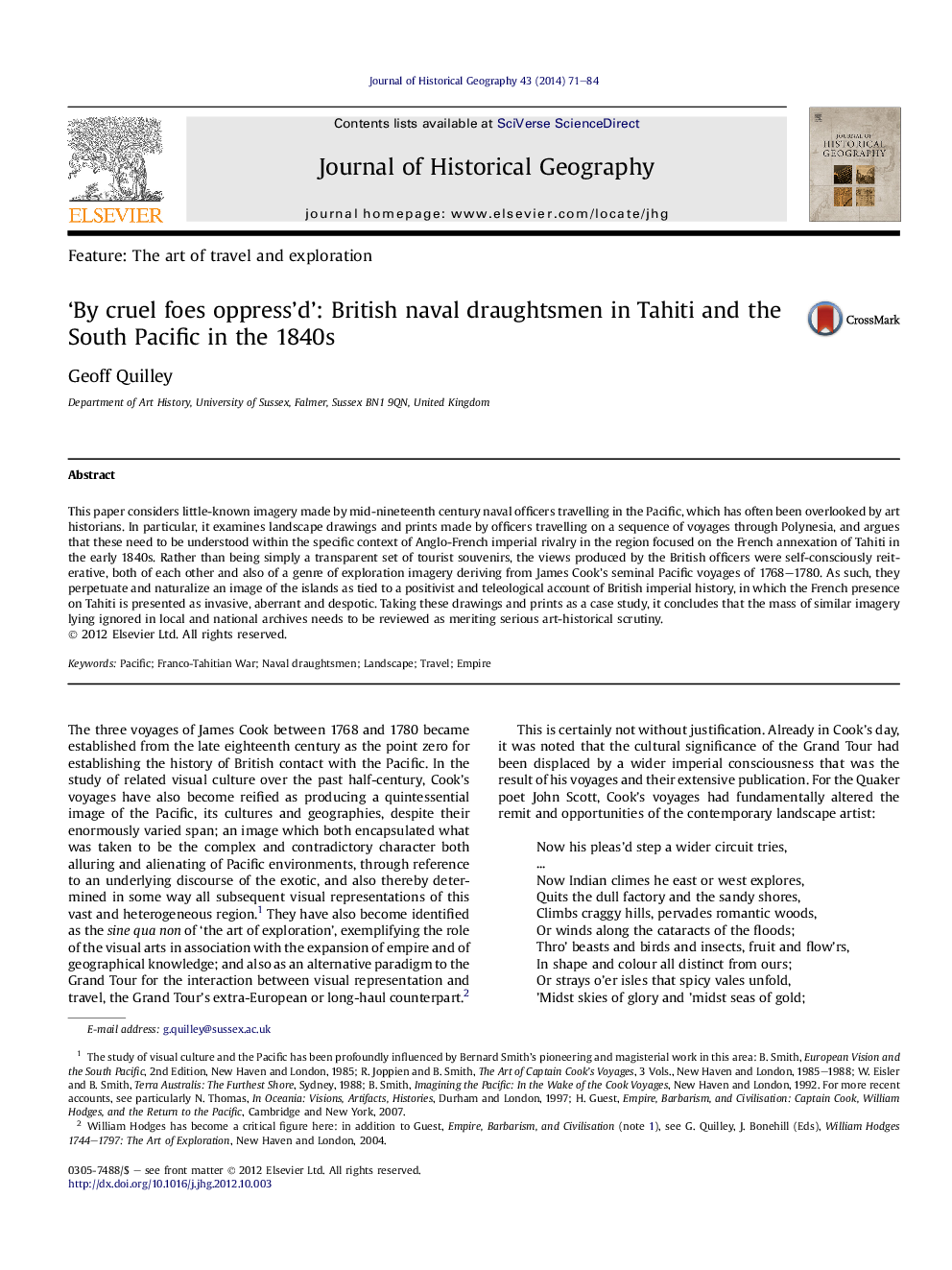| Article ID | Journal | Published Year | Pages | File Type |
|---|---|---|---|---|
| 7448181 | Journal of Historical Geography | 2014 | 14 Pages |
Abstract
This paper considers little-known imagery made by mid-nineteenth century naval officers travelling in the Pacific, which has often been overlooked by art historians. In particular, it examines landscape drawings and prints made by officers travelling on a sequence of voyages through Polynesia, and argues that these need to be understood within the specific context of Anglo-French imperial rivalry in the region focused on the French annexation of Tahiti in the early 1840s. Rather than being simply a transparent set of tourist souvenirs, the views produced by the British officers were self-consciously reiterative, both of each other and also of a genre of exploration imagery deriving from James Cook's seminal Pacific voyages of 1768-1780. As such, they perpetuate and naturalize an image of the islands as tied to a positivist and teleological account of British imperial history, in which the French presence on Tahiti is presented as invasive, aberrant and despotic. Taking these drawings and prints as a case study, it concludes that the mass of similar imagery lying ignored in local and national archives needs to be reviewed as meriting serious art-historical scrutiny.
Related Topics
Social Sciences and Humanities
Arts and Humanities
History
Authors
Geoff Quilley,
